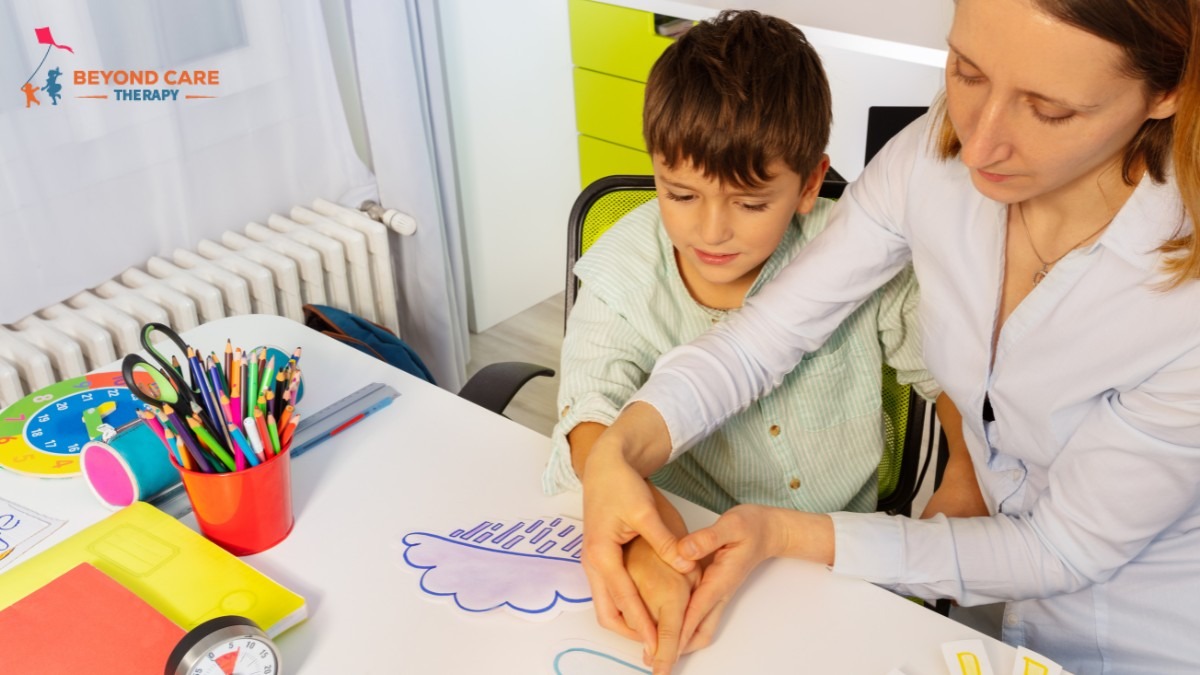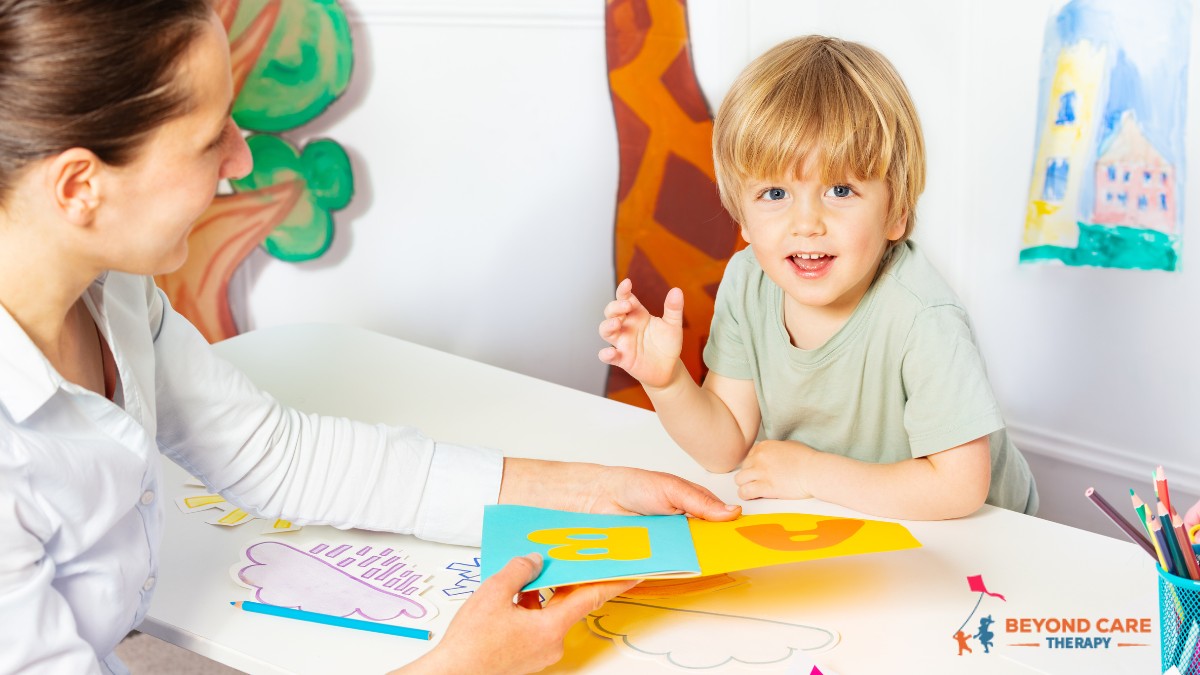Did you know that over 1 in 36 children in the United States are diagnosed with autism spectrum disorder (ASD)? Applied Behavior Analysis (ABA) has become a cornerstone therapy for individuals with ASD, offering evidence-based strategies to promote learning and behavioral improvement.
Among these strategies, shaping plays a critical role in teaching new skills and behaviors. Understanding the “shaping ABA meaning” and its applications can empower parents and caregivers to support their child’s development effectively.
What is Shaping in ABA?
Shaping in ABA is a method for teaching new behaviors by gradually reinforcing small steps toward the target behavior. This approach involves guiding an individual progressively closer to the desired behavior, using positive reinforcement at each stage.
For example, if the goal is to teach a child to say “water,” the process may start by reinforcing any vocalization, then a sound resembling “wa,” and eventually the full word “water.” This method ensures the learning process is manageable and encourages progress without overwhelming the learner.
Shaping is particularly effective in situations where the desired behavior is complex or not yet in the individual’s repertoire. By focusing on small, achievable steps, this technique fosters confidence and success.
How Does Shaping Work?
Shaping follows a structured process to ensure effective learning. Here’s a breakdown of the steps involved:
1. Identify the Target Behavior
The first step in shaping is determining the ultimate goal—the specific behavior you want the individual to perform. This could range from saying a word to completing a multi-step task.
2. Assess the Baseline Behavior
Next, evaluate the learner’s current abilities. This helps identify the starting point and ensures the steps are tailored to the individual’s skill level.
3. Break the Behavior Into Steps
The target behavior is broken down into smaller, manageable steps, each clearly defined to monitor progress effectively. For instance, teaching a child to brush their teeth may involve steps such as picking up the toothbrush, applying toothpaste, and brushing different sections of the mouth.
4. Reinforce Successive Approximations
Each step toward the target behavior is reinforced with positive feedback, rewards, or other motivators. Reinforcement should be immediate and consistent to encourage repetition and mastery.
5. Gradually Adjust Expectations
As the learner masters each step, the criteria for reinforcement become more challenging. This ensures continuous progress toward the ultimate goal.
6. Monitor and Adjust
Throughout the process, it’s essential to monitor progress and adjust the plan as needed. If a step proves too challenging, breaking it down further or providing additional support may help.

Applications of Shaping in ABA
Shaping has a wide range of applications in ABA therapy, benefiting individuals across various areas of development. Here are some common uses:
1. Teaching Communication Skills
Shaping is often used to teach verbal and nonverbal communication. For example:
- Encouraging vocalizations in nonverbal children.
- Gradually teaching complex sentences.
- Promoting the use of alternative communication methods, such as sign language or picture exchange systems.
2. Building Daily Living Skills
From dressing to using utensils, shaping helps individuals gain independence. Examples include:
- Teaching a child to tie their shoes, step by step.
- Reinforcing the use of a fork or spoon during meals.
- Encouraging consistent handwashing practices.
3. Addressing Challenging Behaviors
Shaping can replace undesirable behaviors with more appropriate alternatives. For instance:
- Gradually reducing tantrums by teaching self-regulation techniques.
- Reinforcing calm, appropriate responses in social situations.
- Encouraging a child to wait patiently for a preferred item.
4. Academic Skill Development
Shaping is effective for teaching foundational academic skills, such as:
- Learning to write letters and numbers.
- Developing reading fluency by reinforcing word recognition.
- Building math skills through incremental practice.

Benefits of Shaping in ABA
Shaping offers several advantages for learners and their caregivers:
- Promotes Positive Reinforcement: Encourages learning in a supportive, non-punitive environment.
- Individualized Approach: Tailors the process to the learner’s specific needs and abilities.
- Builds Confidence: Small successes motivate continued effort and progress.
- Encourages Skill Mastery: Gradual steps ensure a solid foundation for future learning.
FAQs About Shaping in ABA
What behaviors can be taught using shaping in ABA?
Shaping can be applied to almost any skill or behavior, including communication, social interaction, daily living tasks, and academic abilities. It is particularly useful for teaching complex or entirely new behaviors.
How is shaping different from prompting?
While shaping focuses on reinforcing successive approximations of a behavior, prompting involves providing direct assistance (e.g., verbal or physical guidance) to help the learner perform the desired behavior. The two strategies can be used together for effective skill acquisition.
How long does shaping take?
The timeline varies depending on the complexity of the behavior and the learner’s unique needs. Consistency, reinforcement, and clear steps can accelerate progress.
Experience Compassionate ABA Therapy at Beyond Care Therapy
If you’re looking for expert support to help your child thrive, Beyond Care Therapy is here to help. We specialize in ABA therapy, offering personalized treatment plans that incorporate proven techniques like shaping to teach meaningful skills and behaviors.
Located in Utah, Texas, Arizona, and Massachusetts, we are dedicated to empowering families and fostering growth. Contact us today to learn how our compassionate team can support your child’s journey. Let’s shape success together!

